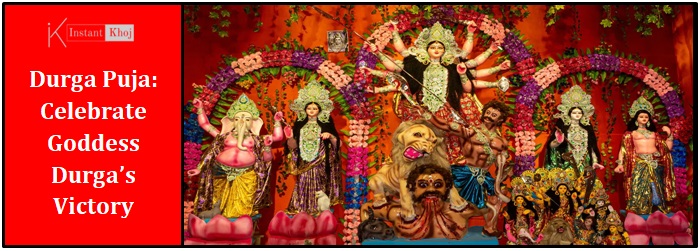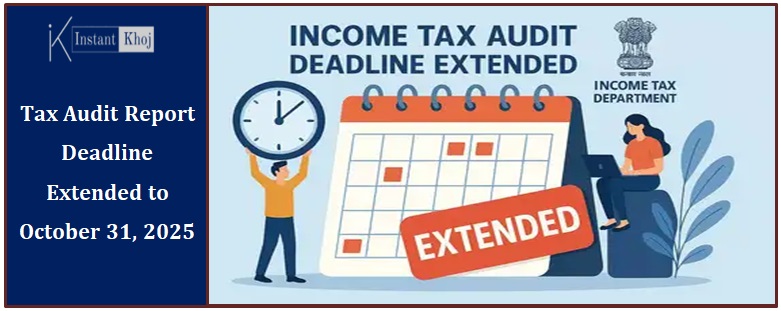Durga Puja is one of the most beloved and grand festivals celebrated by Hindus across India and in Indian communities worldwide. It is a festival rich in spirituality, art, culture, and tradition that spans over five days, commemorating the divine power of Goddess Durga. The festival symbolizes the victory of good over evil and celebrates the strength, compassion, and feminine power of the goddess. Durga Puja is not only a religious event but also a magnificent cultural extravaganza that brings together millions in devotion, artistry, and communal harmony.
In 2025, Durga Puja will be observed with great fervor from 21st September to 2nd October, with the main festivities spanning five key days towards the end of September and the beginning of October.
What is the Significance of Durga Puja?
Durga Puja celebrates the legendary triumph of Goddess Durga over the buffalo demon Mahishasura, symbolizing the victory of righteousness (Dharma) over evil (Adharma). According to Hindu mythology, Mahishasura, a powerful demon, had terrorized the heavens and earth. The gods created Goddess Durga by combining their collective powers, gifting her weapons and divine energy. Durga fought Mahishasura for nine days and nights and finally defeated him on the tenth day, which is celebrated as Vijaya Dashami.
Beyond mythology, Durga Puja is closely linked to the agricultural calendar. It coincides with the end of the monsoon and the beginning of the harvest season, a time to thank Mother Nature and invoke her blessings for prosperity and wellbeing. The festival honors the divine feminine power (Shakti), revered as the source of creation, preservation, and destruction.
It’s a period when families reunite, communities come together, and people engage in prayer, celebration, and cultural activities, reflecting on inner strength and renewal.
Durga Puja 2025: Important Dates and Schedule
The Durga Puja festival consists of multiple days, each with its own significance and rituals. The major days in 2025 fall between the last week of September and the first days of October, as per the Hindu lunar calendar:
Date | Day | Festival Day |
|---|---|---|
| 28th September 2025 | Sunday | Maha Sashthi |
| 29th September 2025 | Monday | Maha Saptami |
| 30th September 2025 | Tuesday | Maha Ashtami |
| 1st October 2025 | Wednesday | Maha Navami |
| 2nd October 2025 | Thursday | Vijaya Dashami |
Overview of the Days:
-
Maha Sashthi: The arrival of Goddess Durga is welcomed, and the idol is unveiled after elaborate preparation.
-
Maha Saptami: Worship of the ‘Nabapatrika’ (nine plants) symbolizing the goddess begins.
-
Maha Ashtami: The most important day, featuring Sandhi Puja and other special ceremonies.
-
Maha Navami: Last day of puja and offerings.
-
Vijaya Dashami: Marks the end of the festival with immersion of the idols.
Rituals and Traditions During Durga Puja
Durga Puja is known for its elaborate and meaningful rituals that are performed with deep devotion. Here’s a detailed look at the key rituals:
1. Maha Sashthi – The Beginning
Maha Sashthi marks the official start of the festival when the idol of Goddess Durga is brought to the pandal (temporary shrine) and unveiled in a ceremony called Bodhan. This day is also known for the Kalparambha ritual, which sanctifies the space and invites the goddess to reside there. Devotees light lamps, chant mantras, and offer flowers and sweets to the goddess.
2. Maha Saptami – Worship of Nabapatrika
On this day, the Nabapatrika or Kola Bou ritual is performed. Nine plants representing different manifestations of the goddess are ceremonially bathed and worshipped. The ritual symbolizes fertility, growth, and the nurturing aspect of the divine mother. Women often participate in special prayers and fasting on this day.
3. Maha Ashtami – The Most Auspicious Day
Maha Ashtami is considered the most significant day of Durga Puja. It features the Sandhi Puja, a powerful ritual conducted precisely at the juncture between Ashtami and Navami. This puja symbolizes the moment Goddess Durga defeated Mahishasura. The ritual involves chanting hymns, lighting 108 lamps, and offering pushpanjali (flower offerings) to the goddess.
On this day, devotees also honor the goddess’s fierce form and seek her protection and blessings.
4. Maha Navami – Final Offerings
Maha Navami involves the last worship and offerings to the goddess. Devotees present bhog (sacred food) and perform various rituals to thank the goddess for her blessings. It is a time to express gratitude and seek continued protection and prosperity.
5. Vijaya Dashami – The Farewell
Vijaya Dashami marks the conclusion of Durga Puja. On this day, the idols of Goddess Durga and her family are immersed in rivers or water bodies in a ritual known as Visarjan. This symbolizes the goddess’s return to her celestial abode. Devotees bid farewell to the goddess, hoping for her return the following year with renewed blessings.
Regional Celebrations in India and Beyond
Durga Puja is celebrated with unique customs and styles across various regions of India and abroad.
West Bengal (Kolkata):
Kolkata, the cultural capital of Durga Puja, is famous for its stunningly artistic pandals, intricately crafted idols, and vibrant cultural programs. Areas like Kumartuli, Bagbazar, and College Square are renowned for their creativity, drawing millions of visitors each year. The festival here combines devotion with spectacular visual arts and lively music and dance performances.
Odisha:
Odisha celebrates Durga Puja with grandeur, featuring idols made from precious metals like silver and gold, especially in Cuttack and Bhubaneswar. The festival incorporates traditional dances, folk songs, and special pujas, preserving its rich cultural heritage.
Assam and Tripura:
In the northeast, Durga Puja includes age-old customs such as devotional bhajans, lighting of earthen lamps, and community gatherings. The celebrations are more intimate but deeply spiritual and culturally significant.
International Celebrations:
Indian diaspora communities worldwide keep the spirit of Durga Puja alive. Cities like London, New York, Toronto, and Singapore organize themed pandals, cultural shows, prayer sessions, and food festivals. These celebrations help maintain cultural connections for Indians living abroad.
The Cultural Grandeur of Durga Puja
Durga Puja is much more than religious rituals; it is a grand cultural festival that showcases India’s rich heritage in music, dance, art, and literature. Traditional performances such as the Dhunuchi Naach—a dance performed with incense burners—create a lively and spiritual atmosphere. The rhythmic beats of the Dhaak drums fill the air, inviting everyone to join in the celebration.
Local artists and craftsmen display their skills through elaborate decorations, creative lighting, and thematic pandals that often depict social messages or mythological tales. The festival also offers a variety of traditional foods and sweets that bring people together to share joy and hospitality.
A Sacred Verse to Ponder
“Ya Devi Sarvabhuteshu Shakti Rupena Samsthita, Namastasyai Namastasyai Namastasyai Namo Namah.”
This ancient mantra pays homage to the Goddess, acknowledging her presence as the divine power that resides within all beings. It reminds devotees to seek strength, courage, and compassion from the divine feminine energy.
Conclusion: More Than a Festival
Durga Puja 2025 is a celebration that transcends religion. It is a vibrant expression of faith, art, and culture that builds bridges within communities. It rekindles emotional bonds, showcases artistic brilliance, and fosters unity and joy. Whether celebrated in bustling cities, small towns, or overseas, the blessings of Goddess Durga inspire strength, happiness, and prosperity.
Mark your calendars for September 21st to October 2nd, 2025, and immerse yourself in the divine spirit of Durga Puja.
Frequently Asked Questions (FAQs) on Durga Puja 2025
1. What is Durga Puja and why is it celebrated?
Durga Puja honors Goddess Durga’s victory over the demon Mahishasura, symbolizing the triumph of good over evil and celebrating feminine power and protection.
2. When will Durga Puja be observed in 2025?
The festival will take place from September 21st to October 2nd in 2025.
3. What are the main rituals of Durga Puja?
Key rituals include the unveiling of the idol on Maha Sashthi, Nabapatrika worship on Maha Saptami, Sandhi Puja on Maha Ashtami, offerings on Maha Navami, and idol immersion on Vijaya Dashami.
4. What is the significance of Sandhi Puja?
Sandhi Puja marks the critical moment when Goddess Durga defeated Mahishasura. It is performed at the exact junction between Ashtami and Navami, involving special chants and offerings.
5. How do different regions celebrate Durga Puja?
West Bengal is known for its artistic pandals, Odisha for its metal idols, Assam and Tripura for their traditional songs and lamp lighting, and Indian communities abroad for cultural programs.
6. What cultural activities are part of Durga Puja?
The festival includes music and dance performances like Dhunuchi Naach, drum beats of the Dhaak, art displays, food festivals, and literary events.
7. What does Vijaya Dashami signify?
Vijaya Dashami marks the goddess’s farewell as her idols are immersed in water, symbolizing the victory of good over evil and new beginnings.
8. How long does Durga Puja last?
Durga Puja celebrations last five days, starting from Maha Sashthi and ending on Vijaya Dashami.
9. Is Durga Puja only a religious festival?
No, it is also a major cultural and social event that brings people together through art, music, dance, and community spirit.
10. Is Durga Puja celebrated outside India?
Yes, Indian communities worldwide celebrate Durga Puja with prayers, cultural programs, and themed decorations.
Also Read:
Explore India’s Culture at Saras Mela 2025 in Ludhiana
FollowCurrent AffairsonInstantkhoj for more latest stories and trending topics.




2 thoughts on “Durga Puja: Celebrate Goddess Durga’s Victory and Joyful Festivities”